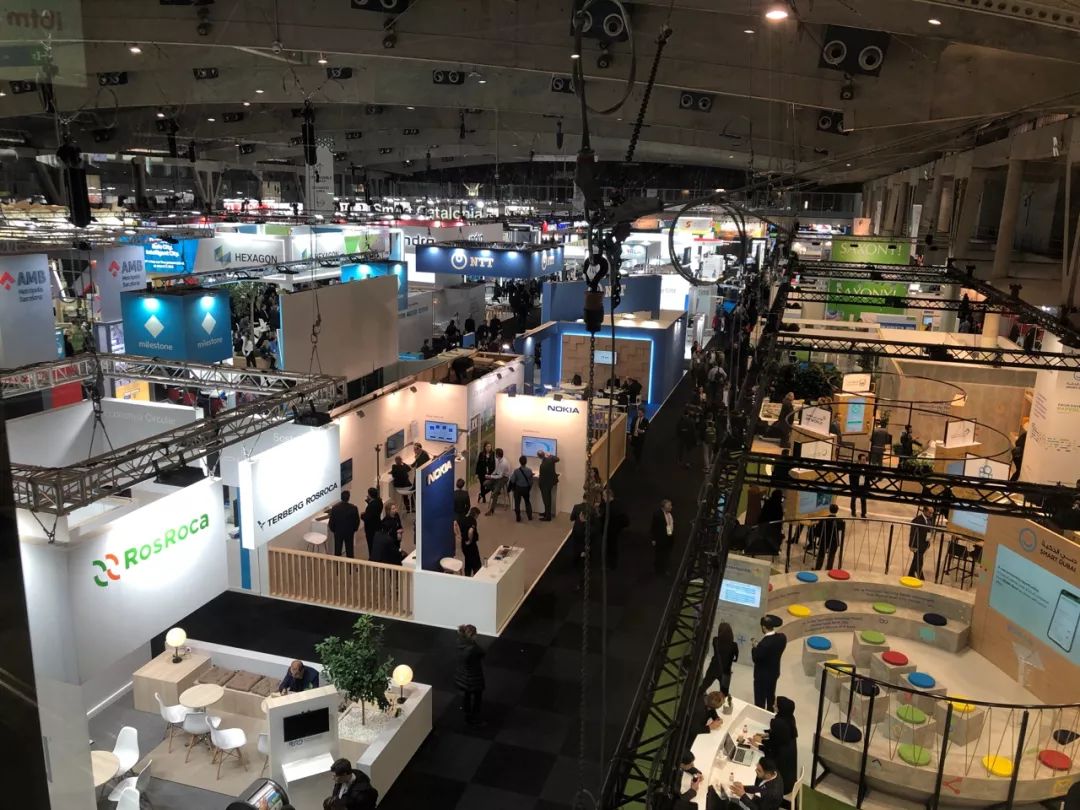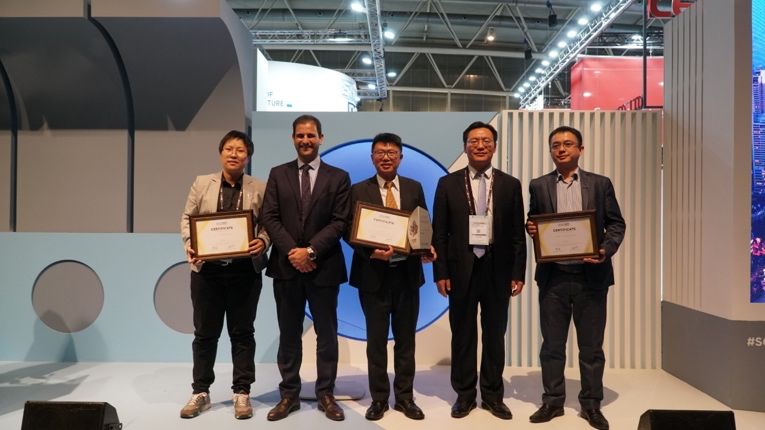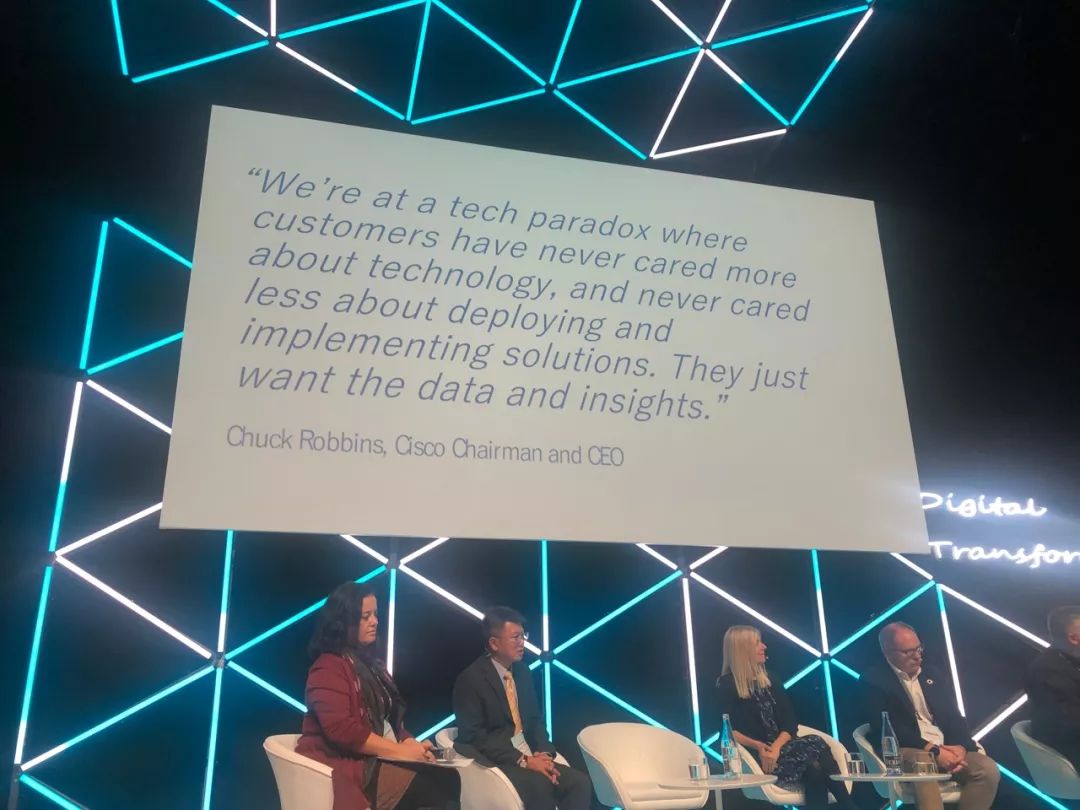The City of Dreams – Make the City More Vital and Know the Citizens
The Smart City Expo World Congress (SCEWC) is the largest event in the global smart city field every year, and is also known as the Oscar in the smart city field. prize. Since 2011, the annual SCEWC has kicked off with the late autumn in Barcelona. The 9th SCEWC that this year ushered in is even more amazing in terms of scale, theme richness, number of participants, and speaker lineup. According to official statistics, there are nearly 25,000 visitors and more than 1,000 exhibitors from 700 cities, 146 countries, and more than 400 speakers.
This time as a media partner came to the conference to participate in the grand event, and explored the latest smart city development and development with many experts, governments and enterprises from around the world in the smart city ecosystem.
Under the catalysis of culture and national conditions, different focuses have emerged
The entire exhibition lasts for 3 days (November 19-21). The scale of the exhibition is very large, and it can be said that it is a real event. The exhibition site has a very rich participation, from the government, large enterprises, start-up projects.
Picture: 2019 SCEWC Exhibition Site
Among them, we have contacted many government organizations, including China, Canada, Dubai, the United States, the Netherlands, and Chile.
We have observed that many governments share their innovative models and staged results with local excellent start-up projects (through competitions, selections, etc.), and there are also many city-level and national-level construction plans. .
It is not difficult to find that, for example, Europe and the United States will emphasize more people’s improvement and convenience in life, and emphasize the concept of “people-oriented” and full communication (environmental protection, sharing economy, community building, smart city). Conceptual education, technical knowledge, personal privacy, financial security, etc.).
In Asia, there are many enabling projects, such as the concept of urban brains, the construction of platforms that emphasize integration, and more complete solutions. There are indeed differences in layout.
There is no right or wrong in the pattern. Smart cities are large-scale projects that emphasize localization. They are also relatively new concepts and are constructed in the most appropriate way. Either way, for local people, success or not and the definition of satisfaction are different.
Active and Opportunity in China’s Smart Cities
We also found that China is not the same as other participating countries. It is not based on the state, but on the city. We have seen Shanghai, Shenzhen, Hangzhou and Huzhou. The local city as a unit also reflects the integrity of the overall and long-term planning, and more is a top-down approach.
The local government actively leads the development of the local smart city industry chain. In addition to local scale, it can even drive more cities to carry out digital operation and maintenance management based on successful experiences.
For example, the Shanghai Jing’an 151 project (the Shanghai Data Exchange Center and the Shanghai Union IoT Cooperation Case), which won the Global Smart City Conference China Region-City Refinement Governance Award, highlights the need for large-scale inspection data. Next, the advantages of building a platform, including coverage, response speed, project management and equipment management efficiency, successfully made Shanghai one of the representatives of smart cities.
The solution of Shanghai Lianyi IoT will also be applied to other 100+ cities in a large scale to help the digital transformation of the city.
Picture: Jing’an won the “City Refinement Governance” Award in the Global Smart City Conference China
Large Enterprise v.s. Startup Project
From the perspective of the distribution of solution providers, we have seen a large number of large multinational companies providing complete solutions, including Huawei, Microsoft, NTT, Siemens, Cisco, etc.Showcase the results of different smart city scenarios (medical, security, education, transportation) in terms of integration capabilities, computing power, and data security.
On the other hand, the proportion of start-up projects is not as much as imagined. Some manufacturers of smart electric piles, intelligent street lamps and intelligent recycling classifications are biased towards the early stage of trials, and there is still no large-scale landing, reasonable business model. It seems that it is still experimenting. No matter which country, this type of enterprise with terminal as the entry point seems to have not run through.
However, because the development of smart cities is still in its early stages, we are very much looking forward to the participation of more start-up projects in the future. As the concept is perfected, new applications emerge.
The latest sharing of more than 400 industry experts in the theme of Dream City-5
In addition to the lively booth booths, this year’s conference has extended five major themes around the concept of this year’s dream city – Digital Transformation, Urban Environment, Mobility, Finance. Governance & Finance, Inclusive & Sharing Cities has invited more than 400 industry experts from around the world to share different topics. Among them, it also hosted the digital transformation sub-site – Data-Driven Cities.
Image: Digital Transformation Session-Data-driven Cities Theme
Technology Applications – Biometrics, Artificial Intelligence, and Blockchain Applications
Urban public networkConstruction, IoT import and deployment, cloud computing, etc. can be said to be the most basic smart city technology application. At the breakout session, we also explored some of the applications of emerging technologies in the near future, including biotechnology (83% penetration rate), artificial intelligence (82% penetration rate), blockchain (population rate 66%), robots and none. Man-machine, AR and other applications.
This type of technology does not currently appear to be the “standard” of so-called smart cities, but we do see that many new attempts are worth looking forward to. (Source: ESI ThoughLab, Research, Building a Hyperconnected City), such as through the blockchain technology to empower elections and voting systems; for example, using 5G to enable real-time telemedicine support for emergency scenarios.
The arrival of 5G, the market monopolizes the situation?
The 5G application is also a very hot discussion and curious point. What can 5G bring? How to balance with other network protocols, and who will win?
In fact, when applying these networks, it is the most efficient state to match the most appropriate network combination according to the final application scenario requirements (energy consumption, delivery delivery, cost). The application of different networks should not be regarded as absolute competition with each other. More is actually to cooperate with each other to improve the construction of the entire application scenario and lay it in the most efficient way.
Quantify smart city performance, ROI settings
In the two-hour discussion, the word that runs through the whole field is ROI. The smart city itself is a project with extremely large implementation and construction costs. The application scenarios are very rich and the management is very complicated. The efficiency of urban project management often becomes the biggest challenge, so how to quantify the results to improve operations. The effect becomes the key.
Sometimes, not technically advanced or advanced, but lack of norms and standards in management and how to quantify results for continuous tracking and optimization. In fact, in essence, the smart city plan seems complex, essentially a large IoT project, and the ROI explored in smart cities is not limited to the return on financial investment, but the efficiency of actual city operations. Obtained a significant improvement.
Resolving travel and traffic congestion (4.3%) through comprehensive surveys of 100 smart cities worldwide; real-time energy price management and monitoring (4.8%); First aid rescue efficiency (5.6%); and digital commerce Certificates (5%) have become the focus of smart cities. (Source: ESI ThoughLab, Research, Building a Hyperconnected City)
OtherIn addition, on a global scale, we can find more common problems after discussions with experts.
Inter-departmental integration and communication; knowledge and talents; long-term thinking
In general, the promotion of urban planning is centered on the government, and the implementation of the plan is often led by the business department, or through the establishment of a dedicated team. However, the actual project landing is often related to the IT department, and even to the infrastructure sector (imagine the types and huge quantities of terminal equipment).
The synergy of different units and the lack of relevant talent and knowledge have become obstacles in most cities when they push the plan. For example, is it sensitive to all the people involved in digital security? From design to implementation, there is a long-term layout thinking? After all, the great features of the smart city system, in addition to the large volume, also emphasize the ability to maintain for a long time.
Two-way interaction between the government and the public-Omni Channels
In the communication with the experts, the priority of good two-way interaction with the citizens is very high. The core and composition of a smart city is the citizen, and this is back to the concept of people-oriented.
As mentioned earlier, everyone’s expectations of their city and the blueprint of a smart city are different, which is closely related to cultural and economic factors. Examples of success in other cities may not be suitable for every city.
Citizen satisfaction and support for smart city projects are closely related to whether the solution has an exact pain point and inconvenience to improve.
How the city knows the true needs of the citizens is to ensure the smooth flow of communication and mutual trust. Multi-channels combine different channels on the line and offline, including websites, offline event promotion, and cooperation with school institutions to guide more people to participate and share information.
To fully understand the needs of the public, it is possible to amplify the effect on the basis of technical empowerment. If there is a lack of communication in the middle, people’s doubts about common data security issues are not resolved, not only will it cause a rebound, but also slow down the pace of advancement.
2020-SCEWC, which is about to celebrate its 10th anniversary
This year’s Barcelona event is a very rich year, and by bringing together participants from global smart cities, we are able to learn, learn from, communicate and export. We also saw the differences between the regions and the latest applications, and also shared discussions and experience sharing for the challenges and obstacles encountered on the way. SCEWC, which is about to enter the 10th year next year, expects more participants from smart cities to participate in the event.
文 | Vivian@出海






